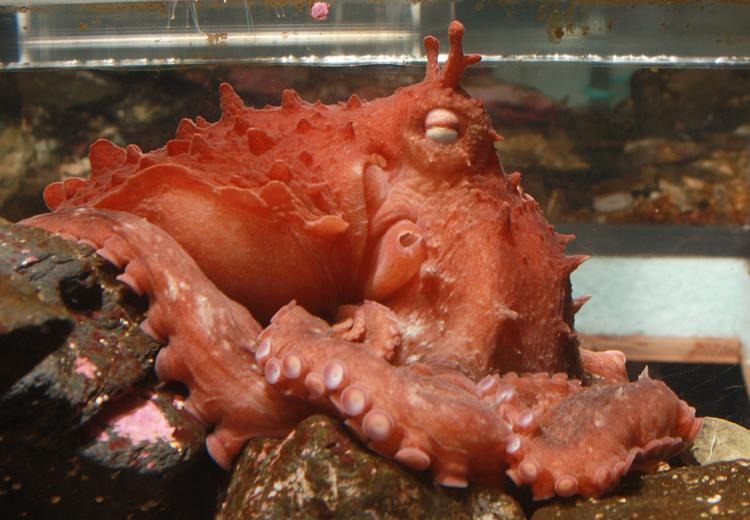There's a new giant octopus in town
You might have thought 2017 was all out of surprises, but here's one more: what we thought was just one giant octopus is actually two distinct species. The Giant Pacific Octopus, or GPO, had already set records as being the largest known example of octopus kind on the planet. Now, scientists have discovered that there's not one type, but two.
The GPO – or Enteroctopus dofleini – has been found in specimens weighing up to 156 pounds, with eight arms each of which have two rows of suckers. Those arms can span more than 20 feet, and are used to capture prey and then feed them into the central beak and toothed-tongue. Like other octopus species, the GPO can emit a toxin from its salivary glands, which both paralyzes its new meal and speeds up digestion.
Suspicions of two distinct types of GPO were raised among researchers Nate Hollenbeck and Prof. David Scheel, both at Alaska Pacific Univeristy, when they spotted unusual examples back in 2012 and 2013 in annual spot shrimp surveys. 21 octopuses were caught inadvertently in the nets, a third of which were visually different from the other GPO.

For example, they lacked the longitudinal mantle folds, and instead had a mantle frill running laterally along the animal. Two white spots on the front were distinctly separate, unlike the single or compound white spots on the known GPO. The textures on the ventral mantle were different, too.
To test out whether this could actually be a new species, the researchers went hunting in Prince William Sound, Alaska. By photographing live octopuses captured there, they could differentiate them into the two groups: the regular GPO was more common, comprising fourteen of the twenty discovered. However, there were more than enough differences in the other octopus to suggest visual body pattern traits weren't just an accident.
Confirming that was genetic testing, which showed that not only did the new octopus have a different haplotype to the known GPO, but that it didn't match any other known species currently recorded. They're related, certainly, but Hollenbeck and Scheel decided to call the new species the Frilled Giant Pacific Octopus.
"A full species description remains to be done," they point out, and there's no official Latin name yet assigned. However, the researchers are curious as to why the mantle frill might have developed, and what purpose it serves to the intelligent creatures. For that, though, further study will be required.
IMAGES D. Scheel
